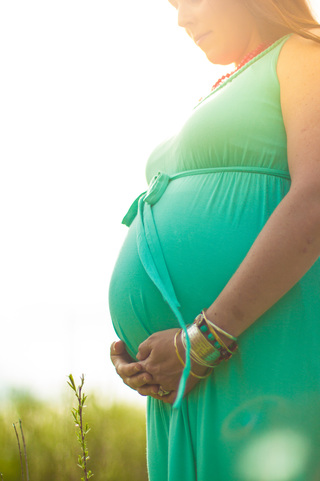|
Last week I taught a workshop on pre and postnatal exercise for fitness leaders. Already certified, these instructors were primarily working with the general, healthy population but also moms-to-be and new moms. Many of the women in the room were already mothers and had their own stories to share about their pregnancies and births. Interestingly, we all come to the exercise studio (and the yoga mat) with our own experience. I’m not going to lie but a large motivation for doing this training was to ensure instructors understand the complications and changes to the pelvic floor women have after birth and possibly caused from pregnancy too. Although not unique, but very unique to me, was my pelvic floor dysfunction post pregnancy and birth of my first child. It took over a year to determine exactly what was wrong. Being a new mom, I thought that what was going on “down there” was normal and what I would have to deal with the rest of my life. Not only was it a tough year with a newborn (read: lacking sleep, sharing my body and milk with a little human being and some days limited adult contact), I was dealing with a body that no longer felt like mine. By 8 months post-partum I finally conceded that I needed to go to physiotherapy. Nothing was improving with my, what I thought, expert knowledge. Boy was I out of my league! It was with the fantastic work of physiotherapists that I was able to find out what the H - E - double hockey stick was wrong! In a nutshell, pardon the medical terms, I was diagnosed with a grade one uterine prolapse, rectocele and cystocele. The triple bang for your buck! Recognizing now that these three forms of pelvic floor dysfunction are like any injury, it has taken me this long to finally put the words to print in this blog. Previous to my first pregnancy, I knew about prolapse but the other two were new to me. Needless to say, having injury in the lady bits isn’t something people talk about. And thus, I’m on the hunt to not only keep my injuries in check but to also get the word out and make it much more well known. This is why I have become trained in hypopressives exercise through Low Pressure Fitness and Hypopressives Canada. Enter this week’s yoga practice. I was looking for a longer practice and fell into Adriene’s playlist for weight loss. I had somehow (again this week) missed this video before and jumped in with two feet. What I got was a challenging core workout! Note: some soreness two days later! By no means, am I complaining about the yoga asana sequence nor the video at all. Yet, my head goes straight to the core. My core. Is this work good for my pelvic floor? I modified slightly but was intrigued when Adriene mentioned Uddiyana Bandha. I had heard references that Uddiyana Bandha is like hypopressive exercise yet I have never taken the time to explore it. Well, this week is the first week to do so. I dove into Coulter’s book, Anatomy of Hatha Yoga, and was shocked to find not only Uddiyana Bandha but also found Ashwini Mudra, Mula Bandha, Agni Sara, and Nauli. Now too much to cover now (and let’s be honest, I’m a bit overwhelmed with understanding them in text form only) but needless to say, hatha yoga has its own set of abdominopelvic poses that I didn’t even knew existed. Why? Well, I don’t think they show up in your traditional yoga studio. They seem highly complex and likely very difficult to teach in a group setting. There are also contraindications to consider and thus, hard to ensure all in a group are safe. So, it might be that they show up in personalized practice for more experienced yogis. But back to Uddiyana Bandha… Considered an upward abdominal lock, Uddiyana Bandha is extremely similar to the apneas in hypopressive exercises. By using the breath (inhalation and exhalation), one takes a “false” breath by keeping the glottis closed to lift the diaphragm and the pelvic floor. It is a vacuum effect based on the decrease in pressure in the chest cavity. It may seem to look like sucking in the abdominals but it is much more. Unable to put my practice into words (I’m still working on my own personal practice of hypopressives!), I’ll opt to leave it at that. Realizing that hypopressive apneas are very similar if not the same as Uddiyana Bandha. Can’t wait to practice and learn more! For my knowledge but also for my pelvic floor health! LW
0 Comments
|
Aspiring Yoga TeacherI've practiced yoga since I was a pre-teen and have always found it to keep me centered. I will be a teacher one day and this is my journey to discover teaching and practice. Archives
April 2019
Categories
All
|
Edmonton, Alberta


 RSS Feed
RSS Feed